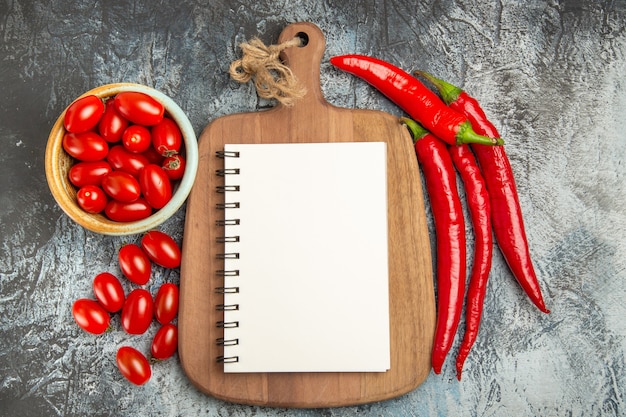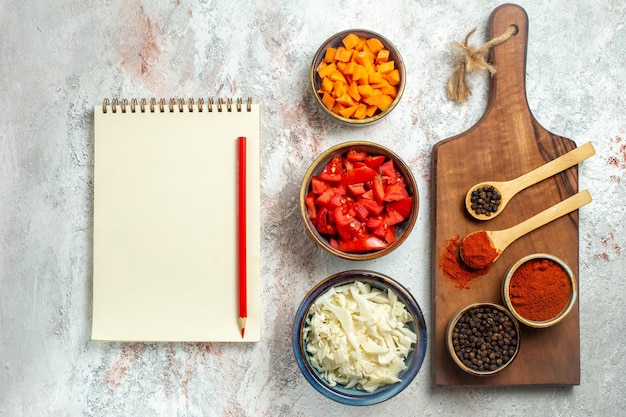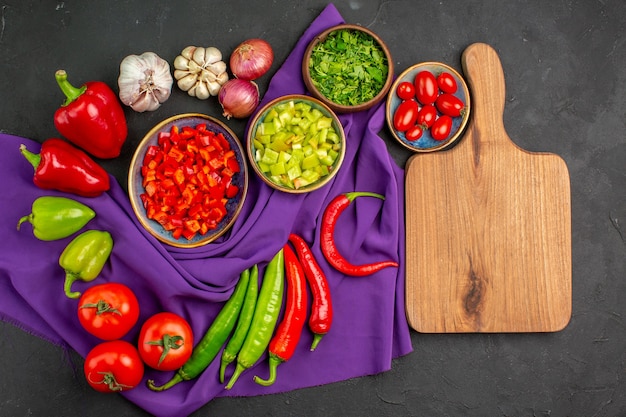Let's talk chili beans, but not the kind you find in a can, all mushy and bland. I'm talking about the real deal, the kind that'll warm your soul and have you licking your plate clean. The kind that's made with love, a little bit of patience, and a whole lot of flavour.
Now, I've been making chili beans for years. I've tried countless recipes, experimented with different ingredients, and learned a few tricks along the way. And trust me, I've had my fair share of disasters - dry beans, burnt onions, the dreaded mushy mess. But through all the trial and error, I've come up with a method that consistently delivers a pot of chili beans that's both delicious and satisfying.
This guide is your roadmap to chili bean greatness. We'll cover everything from choosing the right beans to perfecting the seasoning, and along the way, I'll share my top tips and personal anecdotes to make this journey even more fun. So, grab your apron, get those taste buds ready, and let's get started!
(Part 1) – The Foundation: Choosing the Right Beans

1. The Bean Family: A Brief Overview
You've got your standard suspects: kidney beans, pinto beans, black beans, and the ever-so-popular butter beans. Each bean has its own unique flavour and texture, and it's important to pick the right one for your chili.
Kidney beans – The quintessential chili bean, they hold their shape well and have a hearty flavour. They're versatile and work well in both chunky and smoother chili.
Pinto beans – These guys have a mild flavour and a creamy texture, making them a good choice for those who prefer a smoother chili. They're often used in Tex-Mex dishes and lend a creamy texture to the chili.
Black beans – They offer a slightly earthy flavour and a firmer texture compared to pintos. They add a nice richness and work well with smoky flavours.
Butter beans – These are larger and have a rich, buttery flavour that adds a touch of luxury to your chili. They're often used in more traditional Southern-style chili and add a decadent touch.
2. Canned or Dried?
Now, here's where things get interesting. You can use either canned or dried beans for your chili. canned beans are incredibly convenient, and they save you a lot of time. Just open the can, drain the liquid, and you're good to go. They're also a great option if you're short on time or just don't feel like soaking and cooking beans from scratch.
But if you're feeling adventurous and want to bring out the true depth of flavour, opt for dried beans. They'll require a little more effort, but the reward is worth it. They absorb the flavour of the chili better and have a more robust texture.
A Little Tip:
If you're using canned beans, be sure to rinse them thoroughly to remove any excess salt or preservatives. This will help to ensure that your chili has a balanced flavour.
3. The Pre-Soak: A Crucial Step for Dried Beans
If you're using dried beans, soaking them overnight is key. It helps to soften the beans and reduce cooking time. Plus, it makes for a smoother, more even texture.
Simply put the beans in a large bowl, cover them with cold water, and let them sit overnight. In the morning, drain the water and rinse the beans before adding them to your pot.
A Little Tip:
To speed up the soaking process, you can add a teaspoon of baking soda to the water. The baking soda helps to break down the tough outer layer of the beans, making them softer and quicker to cook.
4. The Secret to Perfect bean texture
I've learned this the hard way. Overcooked beans are a culinary crime. They turn mushy and lose their character.
Here's my golden rule: cook the beans until they're tender but still retain their shape. You should be able to easily pierce them with a fork, but they shouldn't fall apart.
A Little Tip:
If you're unsure whether your beans are cooked enough, try tasting one. It should be tender and easily mashed with a fork. If it's still too hard, keep cooking it for a little longer.
(Part 2) – The Spice Rack: Building Flavour

1. The Chili Powder: Your Secret Weapon
Now, let's talk about the heart and soul of your chili beans - the chili powder. It's the key to unlocking that complex, smoky flavour that we all crave.
Don't just grab any old chili powder. Look for one with a blend of spices like cumin, oregano, paprika, and cayenne pepper. The best chili powders are often made with a combination of spices that create a complex, well-rounded flavour.
A Little Tip:
If you can't find a good quality chili powder, you can make your own by combining equal parts of ground cumin, oregano, paprika, and cayenne pepper.
2. The Holy Trinity: Onions, Garlic, and bell peppers
No chili is complete without the holy trinity: onions, garlic, and bell peppers. They add a base of flavour that enhances all the other ingredients.
Onions – Start by sauteing your onions until they're soft and translucent. This brings out their sweetness and adds depth to the chili.
Garlic – A little bit of garlic goes a long way. It adds a punch of flavour and aroma that's simply irresistible.
Bell peppers – Green, red, yellow – it's up to you. They add sweetness, colour, and a touch of crunch to the chili.
A Little Tip:
For a deeper, richer flavour, try caramelizing the onions before adding them to the chili. This involves cooking them over low heat for a longer period of time, allowing the sugars to break down and create a sweet, caramel-like flavour.
3. The Spice Blend: Customise Your Flavour Profile
Now, it's time to add your personal touch. I love experimenting with different spices to create my own unique flavour profile.
Cumin – Earthy and smoky, cumin is a staple in most chili recipes.
Oregano – This herb adds a touch of freshness and complexity.
Paprika – Smoked paprika adds a rich, smoky flavour that's hard to resist. It's a great way to add depth and complexity to your chili.
Cayenne pepper – For a kick of heat, add a pinch of cayenne pepper. Start with a small amount and add more to taste if you like it spicy.
Chipotle powder – A smoky, slightly sweet flavour that adds another dimension to your chili.
A Little Tip:
Don't be afraid to experiment with different spices! You can add a pinch of cinnamon, a dash of ginger, or even a few cloves for a more unique flavour profile.
4. The Finishing Touches: Herbs and Spices
Don't forget the herbs. A sprinkle of fresh parsley or cilantro adds a vibrant, fresh element to the chili.
A Little Tip:
Add the fresh herbs at the very end of cooking, just before serving. This will help to preserve their flavour and aroma.
(Part 3) – The Liquid: Creating a Rich Broth

1. The Base: Beef or chicken broth
Now, we need a liquid base to simmer our beans in. I prefer beef broth for a richer flavour, but chicken broth works well too.
A Little Tip:
For a vegetarian option, use vegetable broth instead of beef or chicken broth. You can also add a splash of red wine for added depth and complexity.
2. The Secret Ingredient: Tomato Paste
Tomato paste is a game-changer. It adds a depth of flavour that's hard to replicate. Start by browning a tablespoon or two of tomato paste in the pot with the onions and garlic. This creates a base of flavour that will infuse the entire chili.
A Little Tip:
To enhance the flavour of the tomato paste, cook it in a little bit of oil until it's dark brown and slightly caramelized. This will intensify its sweetness and create a more complex flavour.
3. The Toppings: Adding Texture and Flavour
Here's where things get fun. Toppings can take your chili beans to a whole new level.
Sour cream – A dollop of sour cream adds a creamy, tangy element to the chili. It helps to balance out the spiciness and richness of the chili.
Cheddar cheese – Shredded cheddar cheese is a classic topping that melts beautifully over the chili. It adds a sharp, salty flavour that complements the chili well.
Avocado – Sliced avocado adds a healthy dose of fat and a creamy, nutty flavour. It's also a good source of healthy fats and adds a satisfying richness.
Jalapenos – For those who like a bit of heat, sliced jalapenos add a spicy kick. They add a fresh, bright flavour that contrasts nicely with the richness of the chili.
Coriander – Fresh coriander leaves add a bright, citrusy flavour that balances out the richness of the chili. It adds a fresh, vibrant flavour that cuts through the richness of the chili.
A Little Tip:
Get creative with your toppings! You can add other toppings like chopped cilantro, diced tomatoes, shredded lettuce, or even a fried egg.
(Part 4) – The Cooking Process: Bringing It All Together
1. The Slow Simmer: Patience is Key
Now that we've got all our ingredients ready, it's time to put it all together. Combine all the ingredients in a large pot or dutch oven. Bring it to a boil, then reduce the heat to low and let it simmer for at least 2 hours.
A Little Tip:
For a more intense flavour, simmer the chili for 3-4 hours. The longer you simmer it, the more time the flavours have to meld and the richer the chili will be.
2. The Taste Test: Adjusting the Seasonings
After a couple of hours, taste the chili and adjust the seasonings as needed. You might need to add more salt, pepper, or chili powder to achieve the desired flavour profile.
A Little Tip:
Don't be afraid to experiment with the seasonings. You can always add more or less of any ingredient to create the perfect flavour for you.
3. The Final Touches: Thicken the Chili
If you want a thicker chili, you can add a cornstarch slurry. Simply whisk together a tablespoon of cornstarch with 2 tablespoons of cold water, then slowly whisk it into the chili. Simmer for a few minutes until the chili thickens.
A Little Tip:
For a richer, more flavourful chili, try using a roux instead of cornstarch. A roux is a mixture of butter and flour that is cooked until it is a smooth paste. It adds a subtle nutty flavour to the chili.
(Part 5) – Serving Time: Get Ready to Enjoy
1. The Perfect Serving: A Bowl of Goodness
When it's finally time to serve, you'll be greeted with a bowl of warm, comforting goodness. Serve it with a dollop of sour cream, shredded cheese, and a few slices of avocado.
A Little Tip:
For a more visually appealing presentation, top the chili with a sprinkle of chopped cilantro or a few fresh chili flakes.
2. The Sides: Complements to Your Chili
No chili bean feast is complete without a few side dishes.
Cornbread – This classic pairing is a must-have.
Rice – A simple side of rice complements the rich flavour of the chili.
Tortilla chips – Perfect for dipping and adding a crunchy element to the meal.
Salad – A refreshing side salad balances out the richness of the chili.
A Little Tip:
For a more sophisticated touch, serve the chili with a side of grilled corn on the cob or a roasted sweet potato.
(Part 6) – The Leftovers: A Culinary Treasure
1. The Magic of Leftovers: The Next Day’s Delight
Let's be honest, chili beans taste even better the next day. The flavours have time to meld, and the beans have soaked up all the delicious broth.
A Little Tip:
If you're making a large batch of chili, it's a good idea to freeze half of it for later. This will save you time and effort in the future.
2. Reheating Tips: Preserving the Texture and Flavour
To reheat your chili, simply place it in a pot on the stove over low heat and stir occasionally until warmed through. Avoid high heat, as this can dry out the chili and make the beans mushy.
A Little Tip:
For a more even reheating, you can reheat the chili in the microwave. Just be sure to stir it well to ensure that it's evenly heated.
(Part 7) – The Variations: Exploring New Frontiers
1. The Vegetarian Option: A Plant-Based Delight
To make your chili vegetarian-friendly, simply omit the meat and use vegetable broth instead of beef or chicken broth. You can also add additional vegetables like corn, black-eyed peas, or diced tomatoes.
A Little Tip:
For a more protein-rich vegetarian chili, try adding some lentils, tempeh, or seitan.
2. The Spicy Twist: Adding a Kick of Heat
If you like it hot, feel free to add more cayenne pepper, chipotle powder, or even a few diced jalapenos.
A Little Tip:
To really amp up the heat, try adding a few tablespoons of hot sauce to your chili.
3. The Sweet and Savoury Combo: A Unique Twist
For a sweet and savoury twist, try adding a spoonful of brown sugar or molasses to your chili. It's a surprising combination that adds a touch of depth and complexity.
A Little Tip:
For a more intense sweet and savoury flavour, try using a small amount of dark chocolate instead of brown sugar or molasses.
(Part 8) – FAQs: Answers to Your Burning Questions
1. Can I freeze chili beans?
Absolutely! In fact, it’s a great way to preserve leftovers. Simply cool the chili completely and store it in an airtight container in the freezer for up to 3 months. When ready to use, thaw overnight in the refrigerator or reheat directly from frozen in a pot on the stove.
A Little Tip:
To prevent freezer burn, try to freeze the chili in a single layer in a freezer-safe container or bag.
2. How long can I store chili beans in the fridge?
Cooked chili beans can be stored in the refrigerator for up to 4 days.
A Little Tip:
For a longer shelf life, store the chili in a sealed container and refrigerate it for up to a week.
3. What can I do with leftover chili beans?
Leftover chili beans can be used in a variety of ways. You can add them to a burrito bowl, top a baked potato, or even make a delicious chili cheese dip.
A Little Tip:
Try adding leftover chili beans to a quesadilla for a quick and easy meal.
4. Is there a substitute for tomato paste?
If you don’t have tomato paste on hand, you can substitute it with 2 tablespoons of ketchup or tomato sauce. However, the flavour won’t be as intense as tomato paste.
A Little Tip:
If you're using ketchup or tomato sauce as a substitute for tomato paste, be sure to add it towards the end of cooking, as it will thicken the chili more quickly.
5. What if my chili beans are too thick?
If your chili beans are too thick, you can thin them out by adding a little bit of water or broth. Just add it slowly and stir until you reach the desired consistency.
A Little Tip:
To avoid diluting the flavour, add the water or broth in small increments and taste as you go.
Conclusion
There you have it, my friends, the ultimate guide to making delicious chili beans. It's a journey of flavour, a testament to the power of simple ingredients, and a celebration of the joy of cooking. So, what are you waiting for? Get those beans soaking, gather your spices, and let's get cookin’!
Everyone is watching

Corn on the Cob: The Ultimate Guide to Perfectly Cooked Ears
Healthy MealsAh, corn on the cob. Just the name evokes images of sunny days, barbecues, and that sweet, juicy flavour that ...

Scallops: The Ultimate Guide to Perfect Cooking
Healthy MealsAh, scallops. Those delicate, sweet, and utterly delicious morsels of the sea. They hold a special place in my...

Spaghetti Squash: The Ultimate Guide to Cooking and Serving
Healthy MealsRemember that time you saw spaghetti squash at the supermarket, looking all bumpy and strange, and thought, "W...

Salmon Cooking Times: Perfect Guide for Every Recipe
Healthy MealsLet me tell you, cooking salmon is an art form. It's all about getting that perfect balance: juicy and tender,...

Ham Cooking Time: How Long to Bake, Smoke, or Boil a Delicious Ham
Healthy MealsAh, ham. It's a classic, isn't it? A real crowd-pleaser, especially around holidays. And when done right, it'...
